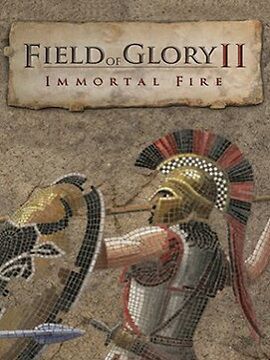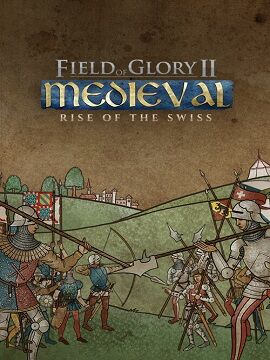Field of Glory II: Medieval - Rise of the Swiss Steam CD Key
From the late 1300s some Swiss started to carry the long pike, at first as a minority weapon, the bulk of their soldiers still carrying the halberd. In 1422, a small Swiss army was beaten at Arbedo by a Milanese army containing a large number of men-at-arms, who dismounted after their initial mounted charge failed. It was noticed that the pikemen fared better in combat against dismounted men-at-arms than the halberdiers, due to the longer reach of their weapons.From that time onwards the proportion of pikemen in Swiss armies was evenly increased, so that by the end of the fifteenth century it had become the dominant weapon. The halberd was only retained by a small number of experienced soldiers to defend the banners, and to break up an enemy's formation if the pike advance was halted.The new Swiss system proved an astonishing success on the battlefield: victorious in the Burgundian Wars, defeating the Holy Roman Empire in the Swabian War, and as mercenaries they were a key component of French King Charles VIII's armies in Italy. Soon pike formations were adopted in many western European countries, notably in Germany by the famous 'landsknechts'.In Bohemia, war had broken out between the followers of Jan Hus, a Proto-Protestant religious reformer, and the Catholic royalists. The Hussites were mostly common people, and they had few nobles to provide heavily armoured men-at-arms. To counter the royalists’ advantage in heavy cavalry, they adapted simple agricultural wagons into the 'Wagenburg', a mobile fortress, from within which the Hussite soldiers could fight. This was mainly a defensive weapon, although at the Battle of Kutna Hora in 1421 it was used to break through a royalist army.In Spain, the Reconquista was finally completed when the Kingdom of Granada was conquered in 1492. Here, the armies of Castile and Aragon had also adopted the pike, but Castile had in addition revived the use of sword and buckler men, in imitation of the ancient Roman legionaries.England saw a series of wars between the Lancastrian and Yorkist branches of the Plantagenet royal family. Today these are known as the Wars of the Roses. Here the battlefield was still dominated by the longbow and dismounted men-at-arms, although a few mercenary pikemen were recruited for some campaigns.Another backwater was Scandinavia, where Sweden fought to break free from the Kalmar Union, which was dominated by Denmark.FeaturesAdditional coverage for the following nations and factions from the introduction of Swiss-style pike tactics or Hussite war wagons by themselves or their opponents until 1500 AD: Aragonese, Berber (Wattasid), Bohemian (Catholic), Burgundian, Castilian, Danish, English (Lancastrian, Yorkist and Tudor), Florentine, French, German (Imperial, Feudal and City armies), Granadine, Hungarian, Hussite (Taborite and Utraquist), Low Countries, Milanese, Neapolitan, Papal, Polish, Rus, Scots, Swiss, Venetian. Each of these has their own historically-based banner. (Several European nations are already covered up to 1500 AD by previous DLC).22 new units.60 more army lists allowing historically realistic armies for each of the above factions and their allies at different dates during the period, and bringing the total number of Medieval army lists to 303. In addition armies can include contingents from historical allies. This gives over three hundred thousand permutations. You will never run out of new matchups to try.8 more historical scenarios covering key engagements of the period on an epic scale: Kutna Hora 1421, Towton 1461, Brunkeberg 1471, Grandson 1476, Loja 1482, Bosworth 1485, Fornovo 1495, Dornach 1499.41 more historical matchups added to Quick Battle mode, increasing the total to 239, most playable from either side.4 more historically-based campaigns covering major leaders and conflicts of the era: Rise of the Swiss, Hussite Wars, Charles the Bold, Louis XI.Sandbox campaign expanded to include all the new army lists, allowing you to lead any nation (and their historical allies) against any other nation (and their allies) – giving over eighty thousand permutations.Time Warp modules expanded to include the new army lists.


